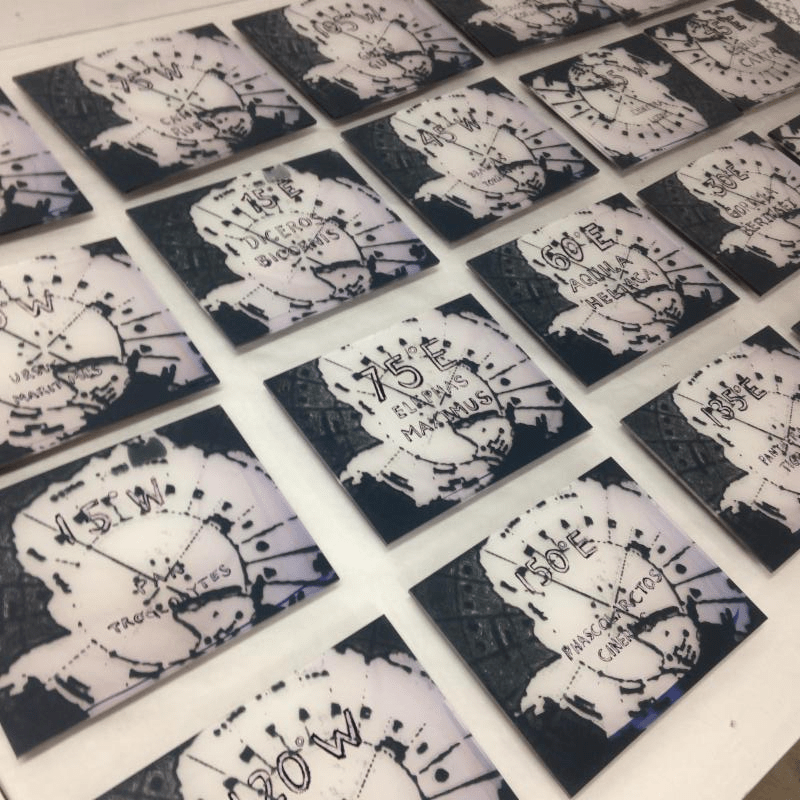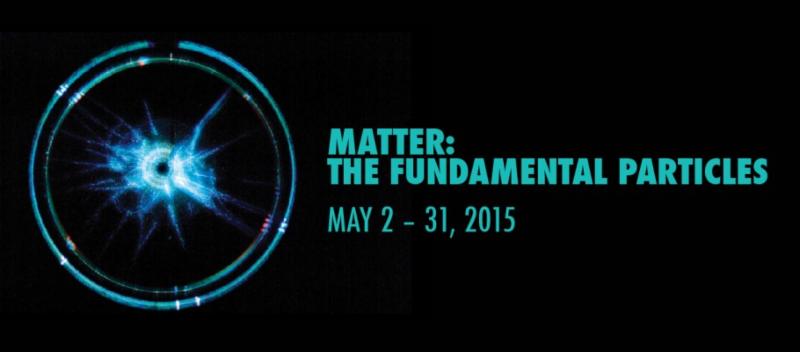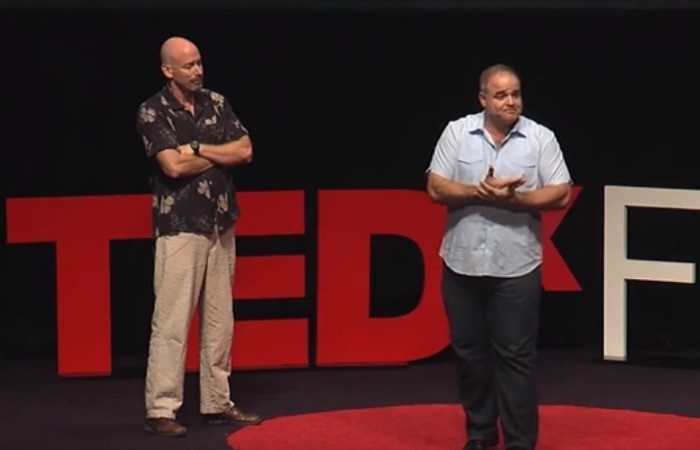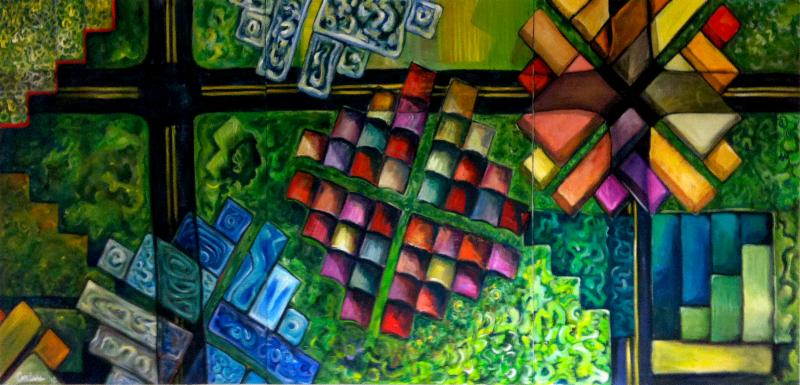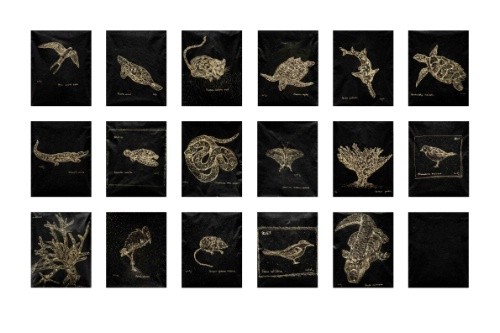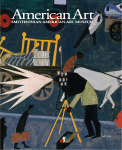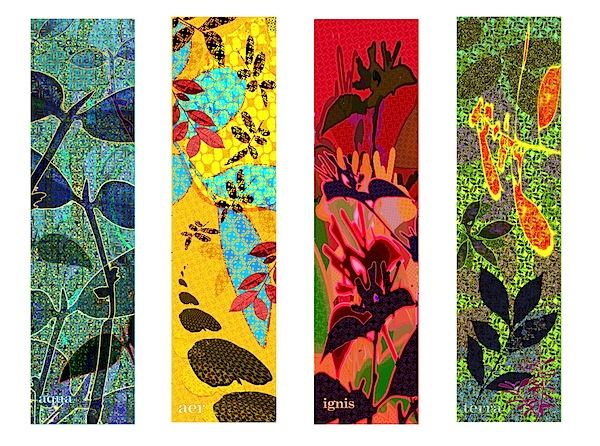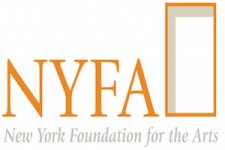Home » Newsletters » 2015 News » May 2015 Newsletter

Rauschenberg Residency
Cortada participates in Rauschenberg Art Residency
The Rising Waters Confab on Captiva Island (April 27th-May 29th) aims to spark new thinking and influence civic will toward finding and spreading solutions to the rising waters of climate change. This is a collective effort guided by a diverse array of artists and writers in a spirit of collaboration with others, such as scientists, philanthropists, activists, and island dwellers.
By inviting artists and other creative thinkers to work within a common frame, this Confab suggests a different kind of residency where, in addition to having time for individual work and reflection, the participants come together for a common theme. It also reflects the way that Robert Rauschenberg worked: experimentally, innovatively and collaboratively. Its focus on applying creativity to the issue of climate change is inspired and challenged by Rauschenberg’s legacy and his philosophy that art can change the world.
More at: https://risingwatersrr.wordpress.com/author/cortadastudio1/
Wednesday: Art Talk
ArtCenter | South Florida
Matter: The Fundamental Particles
924 Lincoln Road, Miami Beach, FL 33139
Thursday: Dedication
JFK Public Library
Hialeah Mayor to dedicate installation of
Cortada’s “Rise” at JFK Public Library
190 W. 49th Street, Hialeah, FL 33012
The work depicts unique blocks arranged in the form of steps. Each block represents an individual’s contribution to a community. Each set of four steps (coming in from the four directions, the four corners, the four winds, the four coordinates) combines to create a moving wheel.
As a community, each individual moves in step with the whole. Upward. Forward.
In unison, the moving steps act like a gear. They support one another and move through time. The aggregate action amplifies the singular impact of one. Integrating all actions it into the one motion, they rise.
(The steps are created using the formula generated by the Catalan numbers.)
Friday: Performance
Miami Beach Urban Studios
Preservation through the Arts
Play includes Cortada’s “Absence of Place” photos
420 Lincoln Road, 4th Floor, Miami Beach, FL 33139
Public Art
Miami-Dade Children’s Courthouse
Cortada installed a glass mosaic replica of his original mural, “Commemorating 100 Years of Juvenile Courts” on the top floor of the new Children’s Courthouse in downtown Miami.
The original glass mosaic hung on the façade of the old Juvenile Justice Center at 3300 NW 27th Avenue. It was unveiled by judges -including members of the Florida Supreme Court- practitioners, children and families on December 10, 1999 to commemorate of the centennial of America’s juvenile courts.
In creating the original work,” Cortada visited and engaged children in Miami-Dade’s dependency programs and in every one of its residential delinquency programs. Their words, poems, drawings and images were collaged into a 15-foot long canvas mural that hung for 15 years in the old courthouse courtrooms’ waiting area. The canvas mural was moved to the new building, and now hangs outside the courtrooms on the 7th floor.
“I went to every single detention center in Miami and asked these kids about how they got there,” recalls Cortada. “I wanted their words to be the face that would define the very building.
Exhibit
Gallery at Kona Kai
Saving the Seagrasses:
Littoral Creatures
Permanent collection
Astrid returns to Whatcom Museum
Through the centuries, artists have demonstrated the limitless potential of alpine and polar landscapes to convey complex feelings, ideas, and messages… Despite diverse themes and interpretations, almost all of the artists respond, in some way, to the beauty of ice.
-Dr. Barbara Matilsky, Curator of Art
Whatcom Museum
Vanishing Ice: Alpine and
Polar Landscapes in Art, 1775 – 2012
Cortada’s “Astrid” ice painting was part of a touring exhibit that just closed at the McMicheal Canadian Art Collection in Ontario. Prior to that the art work was displayed in Alberta’s Glenbow Museum and the El Paso Museum of Art. The group show was organized by at the Whatcom Museum in Bellingham, Washington and was launched there in November 2013.
After being on tour for a year, Cortada’s art work now returns home to the Whatcom’s permanent collection. Read more about Astrid below about it below.
The University of Chicago Press on behalf of the
In 2007 the Miami-based artist Xavier Cortada produced Astrid, a small abstract painting consisting of liquid splotches of blue pigment in a grainy, grayish-white field on paper (fig. 1). The work recalls postwar expressionism of the New York School or later post-painterly abstraction, but such associations only scratch the surface of the picture’s meaning. The more we learn about the artist, his materials, and the context of production, the more we recognize this to be a work of our time, even as it gestures to the past and future. Cortada created Astrid at McMurdo Station, the U.S. Research Center on Ross Island, Antarctica, during a National Science Foundation Antarctic Artists and Writers Fellowship in 2006-7. The picture belongs to a series of mixed-media Ice Paintings that he produced there using ice and sediment samples from the nearby Ross Sea and Dry Valleys of West Antarctica provided by scientists studying climate change. The painting’s title, Astrid, refers somewhat counterintuitively to the King Leopold and Queen Astrid Coast, located far away along the eastern shore of Antarctica. According to the artist, he chose titles for works in this series “by randomly selecting the names of geographic features from a map of the continent that inspired their creation.” Randomness aside, Cortada has asserted unambiguously his environmentalist belief that human beings are “custodians of the planet who should learn to live in harmony with nature.”1
Currently artist-in-residence at Florida International University, Cortada exemplifies the cultural and ecological transnationalism of the twenty-first century. In addition to producing work on commission for the White House, the World Bank, and numerous public collections in Florida, he has collaborated with artists around the world, creating eco-art projects in the Netherlands, Latvia, and Hawai’i, peace murals in Cyprus and Northern Ireland, AIDS awareness murals in Geneva and South Africa, and child welfare murals in Bolivia and Panama. Cortada is an American artist but also self-consciously a citizen of the planet. He describes his most recent series, Ancestral Journeys, a collaborative project with the National Geographic scientist Spencer Wells, as “work that uses genetic data to explore how nature influenced human migration and history,” specifically regarding the various pathways that today’s residents of the Western Hemisphere took from Africa sixty thousand years ago. His point here is that “Perceived differences among people [have] often allowed for exploitation, marginalization, segregation and alienation. Inside our DNA we carry genetic markers that prove that we share the same ancestors and are one human family.”2
Returning to Astrid with Cortada‘s eco-cultural sensibility in mind, we can better appreciate how topical nuances of meaning inflect the work’s evocation of earlier expressionism. For one thing, the Antarctic materials and production site bring to mind recent reports of polar ice melt associated with global warming. Such reports have appeared since the 1970s, but in May 2014 Eric Rignot, a UC-Irvine glaciologist, announced at a NASA news conference: “Today we present observational evidence that a large sector of the West Antarctic ice sheet has gone into irreversible retreat. . . . It has passed the point of no return.” As a result, the world ocean level could rise as much as four feet within the next two centuries, forcing the displacement of millions of people from coastal areas around the globe.3
This may seem like a lot for one small painting to address, but Astrid does so at multiple registers. It creatively conjures the aerial maps and satellite images that scientists such as Rignot use to represent the increasingly unstable environment of Antarctica-a continent whose glacial disintegration has global consequences. Areas of white lightly stained with blue in Cortada‘s work metaphorically suggest continental “landmarks” like the Thwaites Ice Shelf or Pine Island Glacier Basin, which lately have begun to collapse into the ocean. Viewed in terms of materiality instead of metaphor or representation, Astrid functions as a token or specimen of a place undergoing irrevocable change wrought by human actions elsewhere-especially actions associated with Western modernity since the Industrial Revolution. As the artist informed us:
With the ice paintings, I wanted to melt the very ice that threatened to (melt and) drown my city [Miami]. The work, beautiful and serene, would be a precursor of horrors to come. . . . I melted the ice on paper to create the works, adding paint and sediment. The works were made in Antarctica, about Antarctica, using Antarctica as the medium (provided to me by the very researchers who inform us about Antarctica).4
With its expressive abstraction, Astrid recalls the heroic dynamism of American art about 1950, at the apogee of U.S. cultural modernism and military power, but its aqueous sensibility also suggests the dissolution of those human institutions amid global climate disruption-to which Americans until recently have contributed more than any other people. This interpretation takes on added significance in light of the growing scientific consensus that Earth has entered a new geological epoch, the Anthropocene, distinguished from the preceding Holocene by the fact that humans since the nineteenth century have become the primary drivers of environmental change on a planetary scale. In describing this historic development, scientists associate the post-World War II period with a “Great Acceleration” of anthropogenic transformation.5
Cortada‘s Astrid provides a fitting introduction to these issues and this series of commentaries, highlighting the significance of ecology as a key concern not only in American art today but also as a defining idea in the history of modernity writ large-an idea whose comprehension demands our acceptance of environmental change as an irrevocable fact of life.
Please make your charitable donations to the New York Foundation for the Arts, fiscal sponsor of Xavier Cortada’s Participatory Eco-Art Projects, and help engage audiences in addressing global climate change concerns.

